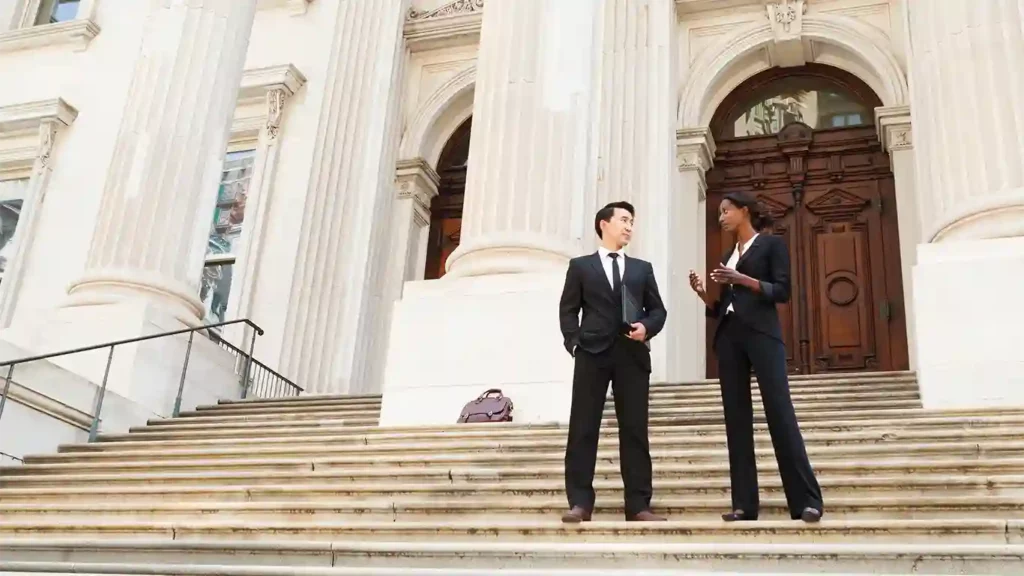TLDR: Your clothes do not need to be expensive. Just neat, clean, well-fitting, and mild. (Look up Luigi Mangione at his 12/23/24 arraignment. Switch out the shoes.)
Entering a courtroom can be a daunting experience, especially during a divorce. You have spent so much time and energy dealing with family issues and you’re probably not feeling great. What you will wear to your courtroom appearance has probably not been your most pressing concern. However, it warrants consideration. All of the preparation you have done for your case will boil down to just a few minutes in front of the judge. Most family law cases hinge on the credibility of the parties and judges don’t have a lot of time to make credibility determinations. Whether you like it or not, your appearance matters.
A wise lawyer once told me that you always want to look like the most reasonable person in the room. He was talking about the arguments you make to the judge, but it extends to physical appearance too. So, in an age without dress codes, how does one dress like a “reasonable person?”
General Guidelines for Courtroom Attire
Opt for business casual, which typically includes dress shirts, dress pants, and dress shoes. A collared or button-down shirt is recommended to convey respectability. Avoid casual attire like tee shirts, tank tops, yoga pants, and tennis shoes.
Here is a quick list of proper and improper courtroom attire:
Proper Attire:
- Dress shirts
- Collared shirts
- Dress pants
- Dress shoes
- Simple dresses or skirts
- Close-toed shoes
Improper Attire:
- Sleeveless shirts
- Sweatpants
- Tank tops
- Sandals
- Pajamas (sorry, but it needs to be said)
Bland, tidy dress prevents assumptions about you that are unrelated to the factual arguments being made. Remember that your attire can influence first impressions and affect court proceedings, so it’s necessary to choose wisely. Ask your divorce lawyer if you have specific questions regarding courtroom attire, as they can provide helpful guidance tailored to your case, based on the culture of the particular court.
Blank Slate / Implicit Bias
Choosing clothing that communicates professionalism and avoids distraction also allows the judge’s potential implicit bias to fall in your favor. Conservative dress not only conveys respect for the legal process but also ensures focus remains on your case rather than your attire. You make yourself a “blank slate” for the facts of your case.
Recommended Attire: Examples
Dress Shirts and Slacks
Select a well-fitted, long-sleeve dress shirt, preferably with a collar-button down or collared shirt. Pair this with dress pants that are neither too tight nor baggy.
Footwear Tips: Shoes to Wear
Footwear should be simple yet formal. Choose dress shoes over athletic or tennis shoes, as the latter may appear too casual. Make sure your shoes are polished and in good condition. Avoid footwear that matches a night out or a fancy dinner, as it might be deemed inappropriate for court proceedings. Proper dress includes selecting appropriate shoes for court. Your choice in footwear should complement your overall attire without being distracting.
Simple Dresses and Tailored Pants
Choose simple dresses or tailored dress pants for a business casual appearance. Avoid clothing that is significantly ill-fitting or damaged. Your clothes do not need to be expensive. Just neat, clean, well-fitting, and mild.
Accessories: Keeping It Minimal
When it comes to accessories, simplicity is key. Choose subtle pieces, sticking to necessary items that convey a modest and professional demeanor, similar to preparing for a formal meeting rather than a fancy dinner.
Body Language and Courtroom Demeanor
Understanding proper demeanor and body language in the courtroom is crucial for influencing perceptions during a legal proceeding. Present yourself with respect and confidence. Maintaining good posture and sustained eye contact with the judge can project sincerity and respect for the court.
Key Body Language Tips:
- Posture: Sit up straight to demonstrate attentiveness. Avoid slouching, eye-rolling, or other gestures that suggest you cannot contain your emotions. Such gestures tell a judge that you are incapable of or unwilling to conform yourself to the standards of etiquette and respect demanded of the environment. When you have so much on the line, such incapability or unwillingness will reflect poor judgment.
- Eye Contact: Maintain it with the judge to show engagement. Avoid looking at or making eye contact with the opposing party while you are in the courtroom.
- Facial Expression: Keep it neutral to avoid displaying anger or irritation. This is easier said than done, but it must be done. Having a pad of paper and pen in front of you can help give you something to do when sitting through difficult testimony.
